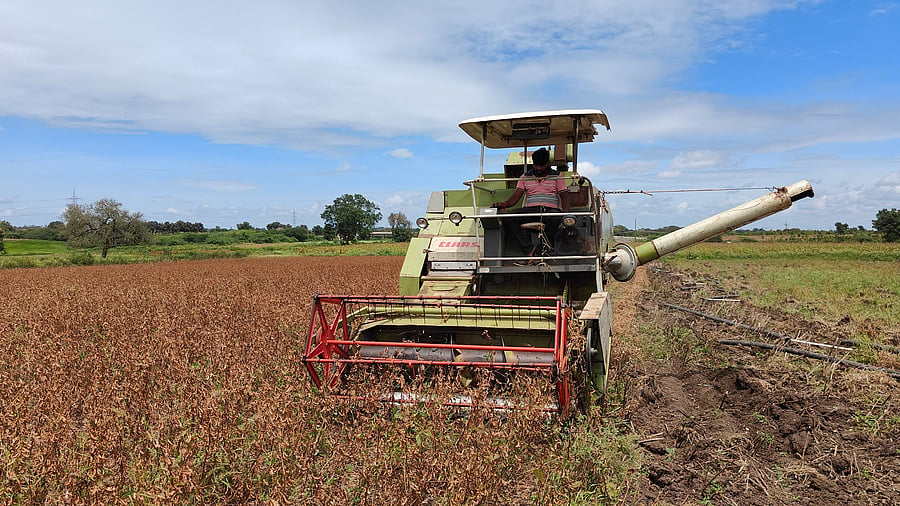
An image showing a farm land
Credit: Special Arrangement
Bengaluru: With labour shortage affecting agriculture, a growing number of farmers are opting for mechanisation in Karnataka. Over the past five years, more than 7.5 lakh units of equipment have been sold through government schemes across the state. Those who have adopted machinery and technology in various agricultural operations say it reduces workload and drudgery to a certain extent.
From rotavators and power weeders to balers and combine harvesters, machines are available for various agricultural activities, including soil preparation and post-harvesting processes. Tractors are required to operate most of these machines. Government schemes cater to around 50% of the machinery demand while the private market caters to the rest 50%.
While farmers started with smaller equipment more than a decade ago, they are now using high-end machines as well. Praveen Betasuru, a farmer in Savadatti taluk of Belagavi district, grows multiple crops such as maize, wheat, sunflower and pulses. He has been using a rotavator for the past one decade and renting harvesting machines for the past four years. It is cost-effective and saves time, he says. However, the rotavator became dysfunctional last year. “I have applied for a government subsidy without which it is very expensive to buy a rotavator. I am still waiting for the government to approve my application,” he adds. According to him, a rotavator costs around Rs 1 lakh after subsidy.
Applications for around Rs 200 crore worth of machinery are pending with the state government.
Sunil Patil, director of a farmer producer company in Mattigatti village of Kundagol taluk in Dharwad district, says 40% of farmers are using machinery, specifically harvesters, in their village. “We take machines on rent. The combine harvester can be used to harvest multiple crops and it has helped us in these times of uncertain weather,” he says.
While manual labour takes four to five days to harvest an acre of millet, the machine requires just one hour, Sunil explains. He says he is not aware of the government schemes to buy machines.
An agriculture department official says the area of cultivation of some crops has increased after machinery became available for various operations. “For instance, the area under ragi cultivation in Davanagere taluk increased from around 500 ha to around 2,000 ha,” he says. “They are shifting from crops that require manual labour to the ones that have undergone mechanisation.”
Anitha Reddy, who works with farmers, says machines have eased the work of women farmers as well. “Agricultural tools have significantly reduced drudgery for women. For instance, weeding tools have alleviated the physical strain and backbreaking work often shouldered by women,” she says, adding that such tools should be made more accessible, which would ultimately increase productivity.
While small machines are affordable to a certain extent, bigger machines like sugarcane harvesters and combine harvesters, which can cost around Rs 1 crore per machine, are used by farmers on a rental basis.
“Under the high-tech harvester hub scheme, the department is providing subsidies to individual farmers and organisations such as farmer producer organisations to buy large machinery such as combine harvesters and sugarcane harvesters. They, in turn, rent it out to farmers. This helps farmers with small as well as large landholdings. The idea is to expand our reach,” says G T Puthra, director, department of agriculture, Government of Karnataka.
In the last two years, 344 harvester hubs have been provided at an expenditure of Rs 130 crore. The department gives a subsidy of up to 50% limited to Rs 1 crore under this scheme.
Highlights - Top 5 crops having maximum mechanisation MaizePaddySugarcaneFinger milletTur dal Agri activities with highest mechanisation Land preparationSowingSprayingHarvesting and threshing